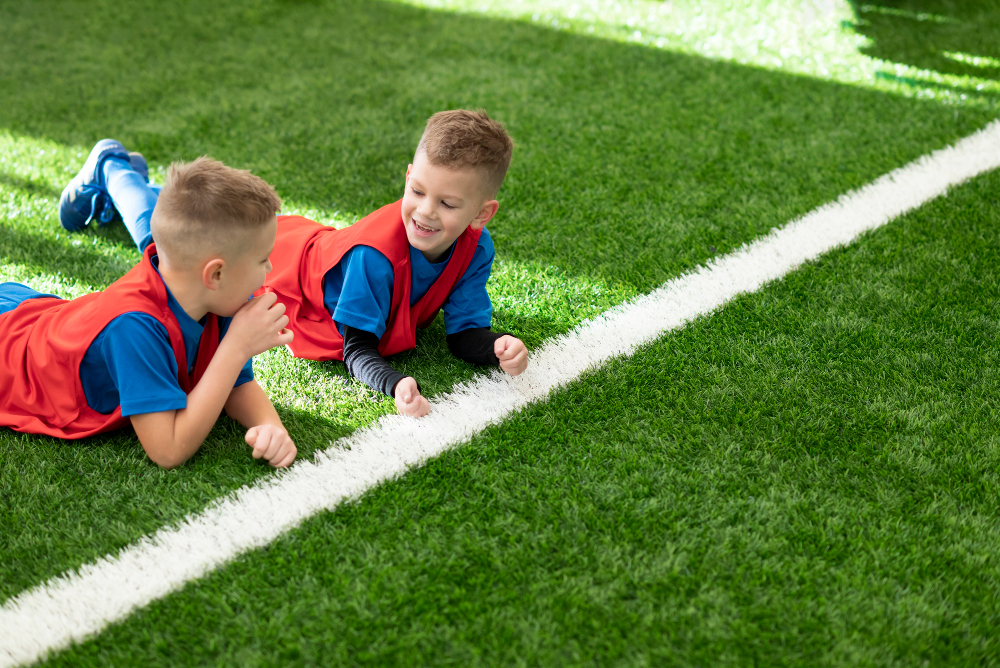Top Landscape Design Tips for Playgrounds to Maximize Fun and Safety

From the neighborhood park to your own backyard, playgrounds should always be a hub of joy, creativity, and most importantly, safety. While anyone can grasp the basics – the slide, the swings, and not a metal surface scorching in the midday sun – the attending landscape can elevate the experience from mundane to magical. Whether you're a parent considering a home renovation or a designer with a new community project, this article will guide you through essential landscape design tips for playgrounds that are both functional and fun.
Understanding Play Environment
Before we dig into design choices, it's crucial to understand the playing field—literally and figuratively. Safety guidelines provided by organizations like the U.S. Consumer Product Safety Commission (CPSC) and the American Society for Testing and Materials (ASTM) outline space recommendations, surface firmness, and fall protection, among other factors. These aren't just legal hoops to jump through – they're cornerstones for a play environment that nurtures growth and development.
Designing with Safety in Mind
Safety isn't an afterthought; it's the first layer of a playground's design. Incorporating soft, shock-absorbent surfaces such as rubber mulch, artificial turf, or engineered wood fiber (EWF) can reduce the risk of serious injuries from falls. Non-toxic and sustainable materials are also paramount. A well-planned layout with clear visibility lines ensures supervision, and barriers like fencing or planting can keep children from wandering into traffic.
Fostering Inclusivity
Every playground should be an accessible oasis for all children. Designing with inclusivity means creating play spaces that every child, with or without disabilities, can enjoy. Consider amenities such as wheelchair-accessible ramps, sensory-rich areas, adaptive equipment, and ensuring all surfaces are navigable by those with mobility challenges.
The Role of Color and Texture
The color palette and textures used can significantly impact the play atmosphere. Bright, contrasting colors aren't just eye-catching—they also aid children with visual impairments in recognizing and enjoying different elements. Textures can range from smooth to rough, soft to hard, providing varied tactile experiences that add depth to play.
Providing Shelter and Amenities
Play doesn't stop when the weather takes a turn. Incorporating shelters and amenities like water fountains, seating areas for guardians, and trash cans keeps the space functional year-round. These additions also reinforce the sense of community, encouraging extended stays and repeat visitors.
The Importance of Sustainable Practices
Employing sustainable practices in playground design benefits not only the environment but also the health of the children and the longevity of the space. This means using materials that are low-maintenance, water-efficient landscaping, and construction methods that minimize disturbance to local ecosystems.
Blending In with the Surrounding
A successful playground design doesn't scream "I don't belong here" but rather feels like a natural extension of the environment. Take cues from the surrounding landscape, such as native flowers and trees, to create a harmonious space that feels settled and serene.
Maintenance and Upkeep
A lush, green playground may look inviting, but it requires regular maintenance to remain safe and attractive. Invest in a robust maintenance program that includes regular inspections, surface repairs, and cleaning to keep the playground looking its best and operating safely.
Enhancing Educational and Sensory Elements
Playgrounds can be powerful educational tools. Consider adding elements that inspire curiosity and learning, such as interactive panels, botanical gardens, or animal sculptures that represent local fauna. Sensory gardens with fragrant plants, textured surfaces, and sound-making features further enrich the play environment.
Customization for Specific Age Groups
One size does not fit all when it comes to playgrounds. Tailor sections of the space to specific age groups, as their developmental needs and play preferences differ. Designated zones for toddlers, school-age kids, and teens will ensure that every child has access to age-appropriate activities and challenges.
Partnering with the Community
Engaging the community in the design process establishes a sense of ownership and can generate some of the most creative ideas. Use community workshops, surveys, and outreach to gather input from children, parents, and local organizations. This collaborative approach ensures that the playground reflects the desires and needs of the people who will use it.
Incorporating Interactive Water Features
Interactive water features, when environmentally appropriate and safely managed, can be a thrilling addition to a playground. From gentle jets and misters to small fountains and splash pads, water features add a new dimension of play that's especially refreshing in warmer climates like Florida's.
The Role of Digital Technology
In today's digital age, incorporating smart technology into playgrounds can offer an innovative way for children to play and learn. Think interactive gaming platforms that promote physical activity, or apps that encourage exploration and creativity. However, balance is key—digital elements should complement, not dominate, the overall play experience.
Conclusion
Playground design is a blend of art and science, combining safety with creativity and fun. This harmonious synthesis results in spaces that captivate the imagination of children and adults alike. By considering the tips outlined in this article, you can craft a landscape that cherishes the precious moments of play, fostering health, development, and joy for years to come. If you're contemplating the installation of a playground turf in Florida, reach out to From The Ground Up Landscaping for unparalleled expertise and service. Your dream playground is just a design away.